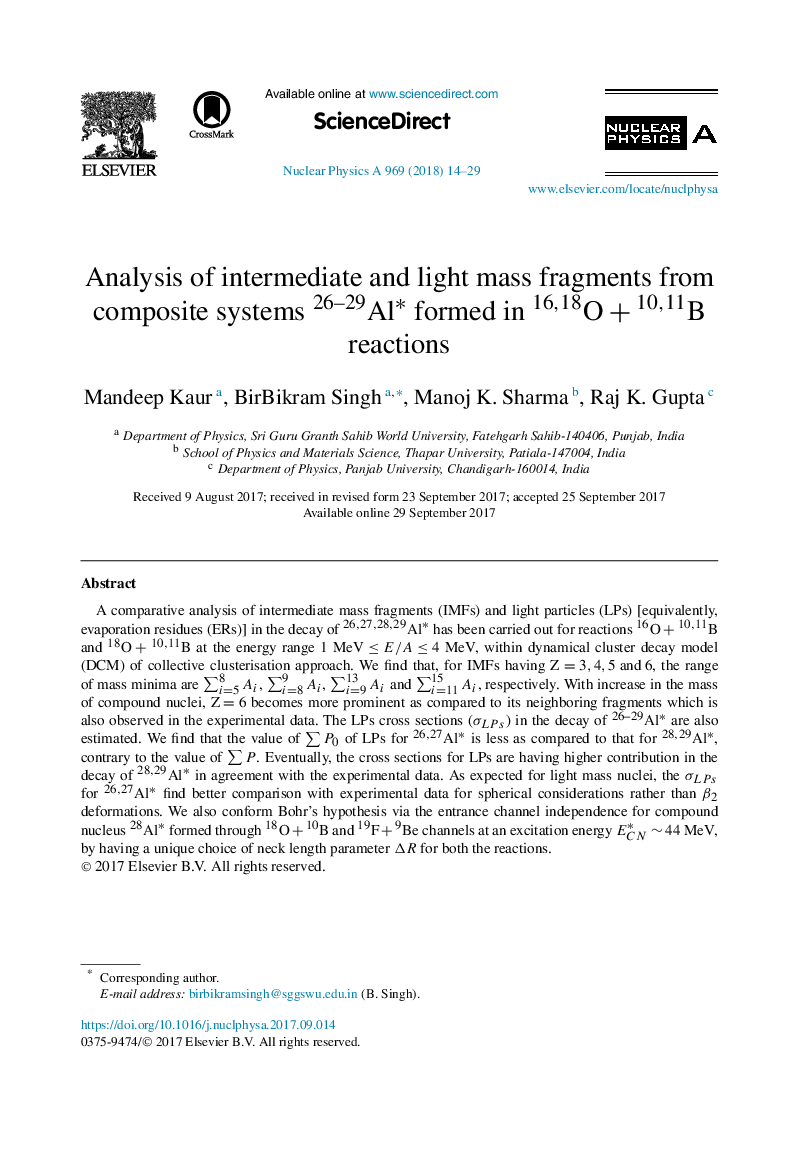| Article ID | Journal | Published Year | Pages | File Type |
|---|---|---|---|---|
| 5493867 | Nuclear Physics A | 2018 | 16 Pages |
Abstract
A comparative analysis of intermediate mass fragments (IMFs) and light particles (LPs) [equivalently, evaporation residues (ERs)] in the decay of 26,27,28,29Alâ has been carried out for reactions O16+10,11B and O18+10,11B at the energy range 1MeVâ¤E/Aâ¤4MeV, within dynamical cluster decay model (DCM) of collective clusterisation approach. We find that, for IMFs having Z=3,4,5 and 6, the range of mass minima are âi=58Ai, âi=89Ai, âi=913Ai and âi=1115Ai, respectively. With increase in the mass of compound nuclei, Z=6 becomes more prominent as compared to its neighboring fragments which is also observed in the experimental data. The LPs cross sections (ÏLPs) in the decay of 26-29Alâ are also estimated. We find that the value of âP0 of LPs for 26,27Alâ is less as compared to that for 28,29Alâ, contrary to the value of âP. Eventually, the cross sections for LPs are having higher contribution in the decay of 28,29Alâ in agreement with the experimental data. As expected for light mass nuclei, the ÏLPs for 26,27Alâ find better comparison with experimental data for spherical considerations rather than β2 deformations. We also conform Bohr's hypothesis via the entrance channel independence for compound nucleus 28Alâ formed through O18+10B and F19+9Be channels at an excitation energy ECNââ¼44MeV, by having a unique choice of neck length parameter ÎR for both the reactions.
Keywords
Related Topics
Physical Sciences and Engineering
Physics and Astronomy
Nuclear and High Energy Physics
Authors
Mandeep Kaur, BirBikram Singh, Manoj K. Sharma, Raj K. Gupta,
